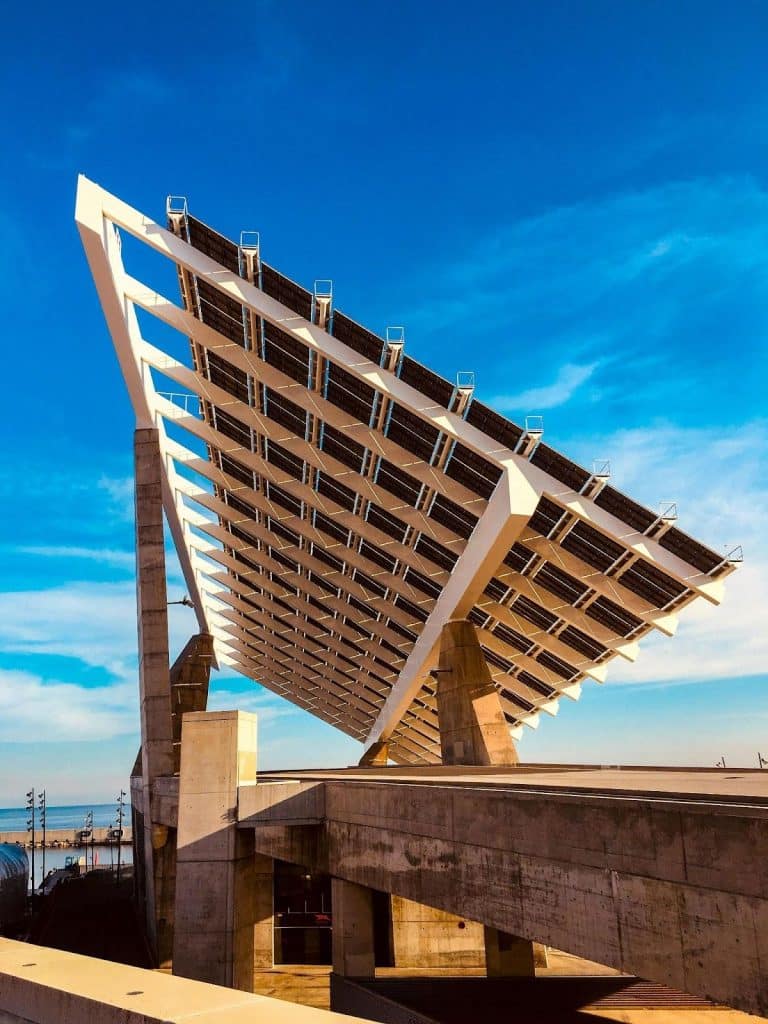Solar financing can eliminate or reduce the upfront costs of a renewable energy installation for individuals, businesses, and other organizations embracing clean power and saving money on long-term electricity expenses.
As local and global initiatives drive green electricity development worldwide, solar projects can now be funded in a variety of creative ways with options for every kind of property, energy demand, and budget.
From traditional methods to the innovative programs of today and tomorrow, this article explores five solar financing models energy companies can use to create affordable solutions for residential, commercial, and industrial renewable power installations.
5 Solar financing models to drive more business in 2024
If your solar financing options are limited, potential customers may go elsewhere.
For instance, if your company only offers single-family homeowner loans for residential solar, you may never tap into the multi-family building market, where millions of Americans live and can save on electricity costs with renewable power as well.

With more tools in your solar financing toolbelt, offering a greater number of buying options can help drive sales and scale your business in any direction you wish.
1 | Variable solar financing solutions
Avoiding a large upfront payment, about 85% of residential solar panels installed in the United States are financed with some sort of loan. This means that American homeowners may be financing over a dozen billion dollars annually in home solar systems. Taking that statistic into condsideration, approximately $15 billion worth of residential photovoltaic (PV) assets were installed in 2021.
While offering solar loans is not exactly “innovative,” having a wide range of options is essential to customize your solutions for clients and project stakeholders. By offering solar financing options with variable terms, you can help customers find the perfect solution to optimize their cash flows, pay for the system over time, and ultimately create the highest possible lifetime savings.
With integrated financing programs from Mosaic, Dividend, GoodLeap, Service Finance, Solargraf allows you to choose between cash or loan options to compare financials within the proposal.
2 | On-site, third-party ownership
When a personal solar loan simply isn’t in the cards for your leads, offering a third-party ownership (TPO) option can expand your business into new customer markets. While operating solar TPO programs, your company will maintain responsibility for customers’ solar energy system performance while collecting ongoing payments for the equipment (in a solar lease) or the electricity it produces (in a power purchase agreement).

Solar leasing
In a solar lease, your customers will pay a flat monthly rate for their solar energy system. In return, they can use all the solar electricity produced to power their property and reduce utility bills. Solar lease terms usually last either 20 or 25 years and typically include an annual rate escalator. When offering solar lease programs, including a buyout option can incentivize customers to take action with the possibility of more savings to be unlocked later on.
Power Purchase Agreements (PPAs)
Unlike a lease with flat monthly payments, a power purchase agreement (PPA) is more like a “pay-as-you-go” third-party ownership model for solar energy systems. With a PPA, your customers will purchase the solar power the panels produce directly at rates less than utility electricity.
Solargraf partners with Everbright and LightReach to finance third-party ownership through leases or PPAs in addition to cash and loan options.
3 | Community solutions (shared solar)
Shared or community solar programs create renewable energy solutions at scale with pooled financing from multiple end-users. Although shared solar programs usually involve more stakeholders, red tape, and development time, large projects may be worthwhile if your business can successfully enlist participants and reduce electricity bills with virtual net metering.
When developing community solar, you can follow first- and third-party ownership models for stakeholder participation in a new installation, including accessibility to renters, low-income households, multi-family facilities, and other off-site users.
Community solar installations or “gardens” are typically centralized near participants and may be installed on rooftops, ground-mounted, included in carports, over water, and in other increasingly creative places so long as approved by local utilities and municipalities.

4 | Crowdfunding and peer-to-peer solar financing
When traditional purchasing methods are not driving enough value for your business and customers’ bottom lines, crowdfunding and peer-to-peer models may revolutionize the way your solar projects are financed. In a space where technology and private equity meet, connecting investors with property owners can be done both residentially and commercially, anywhere in your service area.
Although crowd-funded projects may be difficult to launch, establishing a sustainable peer-to-peer solar financing network can be effective and profitable when results are repeatedly created for investors and customers alike. For instance, Mosaic began as a crowdfunding initiative in 2014 and is now one of the largest and oldest solar financing companies in the world, helping countless property owners go solar year after year.
5 | PACE, C-PACE, and other government programs
Finally, there are several government-sponsored financing programs for solar energy projects that can reduce your total investment costs and guarantee long-term savings. By helping property owners take advantage of these programs, you may be able to flex your local expertise, create real value, and close more sales for homes and businesses.
Available in over 35 states, PACE (Property Assessed Clean Energy) programs create locally funded government loans (through cities and counties) that pay the upfront costs associated with a PV solar installation. In exchange, the debt of the investment is paid by the property owner over the next 10 to 20 years on the property taxes, usually without a premium beyond the final costs of the solar energy system.

While a few, scattered R-PACE programs are operating in the US today, C-PACE loans for commercial projects are more commonly available nationwide. Before signing any new customers, it is essential to understand that PACE loans transfer the debt of a solar purchase from the property owner to the property itself. So even where available, solar projects may be rejected for PACE funding if the property owner owes existing mortgages, liens, or debts and the lender denies the installation.
The future of solar financing
The availability, value, and diversity of solar financing options are highly dependent on government support, efficient development processes, and local incentives that make clean energy more affordable for property owners. Continued innovation and support of private and government sponsor-financing can help cities and states meet emissions goals while helping community members adopt solar and save on electricity costs.
As a business owner, it is your responsibility to keep up with new solar financing innovations, support affordable program development, listen to your customers, and continuously expand your sales offerings. By seamlessly integrating new and valuable financing opportunities for your leads, you can stay ahead of the competition with solar solutions for every kind of property owner.
Bottom line
In summary, there are many, many ways to finance a solar project. While no single way is the answer, the more solar financing options that you can offer your customers effectively, the more you can grow your business. To do so, it is essential to embrace industry changes, keep an eye on the latest technology, and find the right partnerships along the way.
Solargraf accelerates workflows for renewable energy companies by allowing users to easily integrate diverse financing options into the solar design, proposal, and sales process. From initial audit to contracting and permit approvals, Solargraf can help you save time on customer acquisition and project development, without ever compromising accuracy.
Learn more about scaling your business with Solargraf.
Note: This article was written for educational purposes and is not explicit business, financial, or tax advice.


 United States
United States Germany/Austria
Germany/Austria Brazil
Brazil Netherlands
Netherlands Japan
Japan